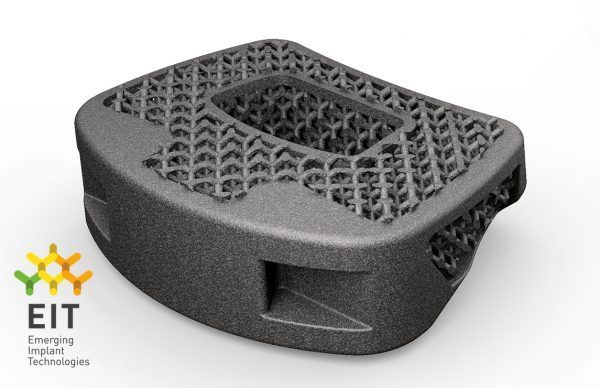German medical device manufacturer, EIT Emerging Implant Technology which aims at creating 3D printed titanium implants for spinal applications has been granted the U.S. Food and Drug Administration (FDA) clearance of the expansion of the label of their EIT Cellular Titanium® Cervical Cage. Applications of this approval concern multiple contiguous cervical levels (C2 to T1).
EIT Cellular Titanium® is a 3D printed porous titanium structure that has been designed by taking into account scientific insights on ideal pore shape and size. The aim is to optimize cell proliferation and bone ingrowth.
The anatomical design of the EIT cervical cage enables to overcome the surgical and biomechanical challenges of cervical multi-level fusion by adapting to maximized vertebral endplate contact and sagittal balance restoration.
EIT’s proprietary 3D process supports the fusion potential of the implants by including post-printing etching procedures, allowing for unique porous structures that are impossible to manufacture with traditional manufacturing techniques. “This is another important regulatory milestone for EIT,” said Guntmar Eisen, Founder and CEO of EIT.

The EIT cervical cage should be used with supplemental fixation and is intended for autogenous and/or allogenic bone graft to facilitate fusion.
Justin Eggleton, Senior Director of Regulatory Affairs commented “this clearance represents continued synergy between FDA and the medical community. The expanded indications to multiple levels in the cervical spine facilitates improved surgeon collaboration and the ability to collect data that will strengthen the total product lifecycle, which ultimately benefits patients.”
As far as FDA Clearance is concerned, Stryker’s Spine division received 510(k) clearance for its Tritanium® C Anterior Cervical Cage. It is a 3D-printed interbody fusion cage designed for the cervical spine.
For further information about 3D Printing, follow us on our social networks and subscribe to our newsletter!





